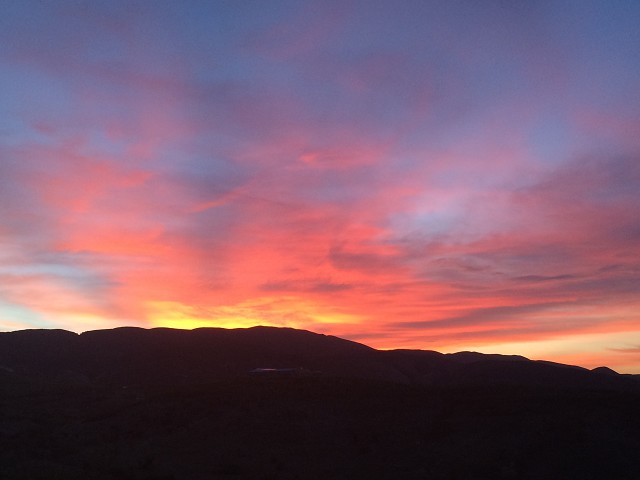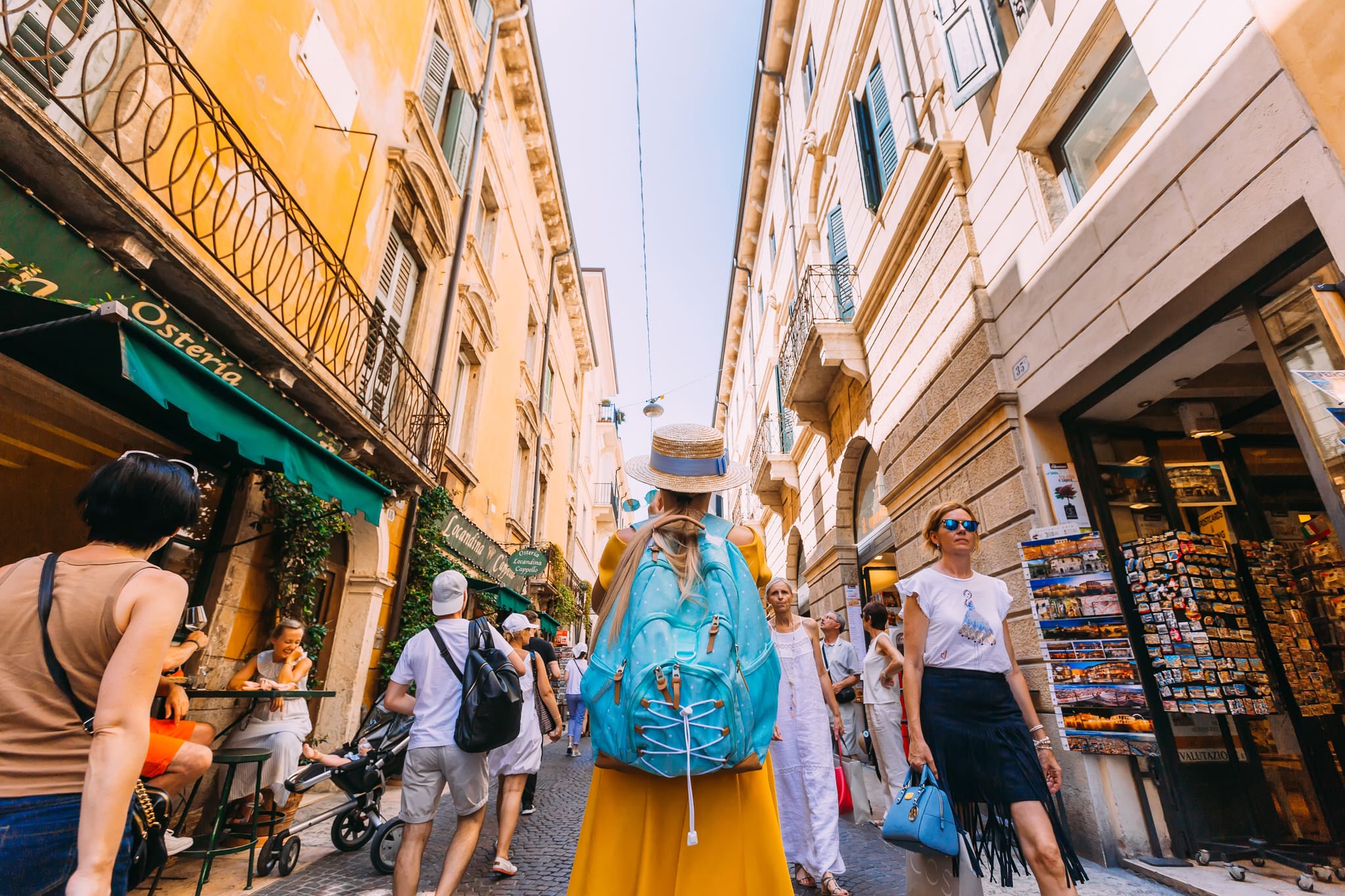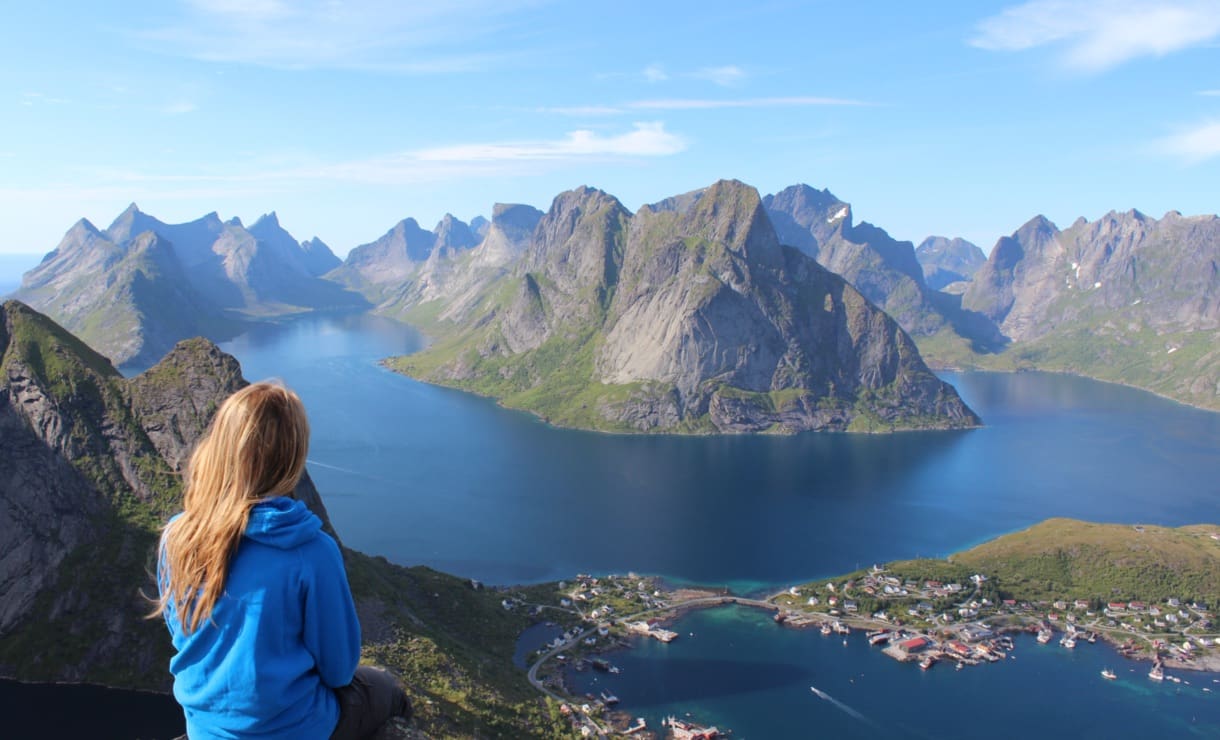The first thing that strikes me is the color: soft green, vivid red, sunny yellow, bold blue. Color splashes across walls, store fronts and fences. It whizzes by on trucks, cars and vans. I see it even on poles, in ditches and on piles of rock. Everywhere I look, Haiti is brightly painted.
Sometimes the color is decoration. Other times, it’s advertisements, featuring brands of chips or meter-wide Coca-Cola logos. No plastic or metal signs hang in front of businesses; instead, their names are painted in large letters on their fronts. Jesus is featured prominently here, and I read the French store names: Merci Jesus Centre de Beaut, Christ Seul Espoir Produits Alimentaires. My favorite is Christ Retourne Bientt Matriaux de Construction, Christ Is Returning Soon Construction Materials.
We drive past rolling, scraggly fields. This region of the country is arid and dry, and cacti are scattered among the tenacious shrubs that dare to take root in the hard, cracked dirt. Cows are teathered to the ground or roam freely through the fields. Some graze, but most stand beneath whatever shade they can find. The cows are smart; it is swelteringly hot in the light of the sun. Their skin droops across their bodies, revealing their spines and ribs. Haiti’s cows, like her dogs and her children, are hungry.

In the morning, as the sun peeks its first rays over the low mountains, I hear the singsong jingle of a truck passing along the road below. It’s not selling ice cream, but water: one five gallon jug for 25 Haitian goudes, or roughly 55 cents. Used exclusively for drinking water, a jug will last a family of four for one to two weeks with very careful conservation. If they have no other access to potable water, in a few days they will have to purchase more. It’s an expensive necessity in villages that lack water purification plants, or even sources from which to draw water to purify.
Goats roam freely through every village. They wander the streets, meandering aimlessly through the day. They perch on walls and windowsills and piles of rock, watching us pass. When the bus has parked and we’ve disembarked, they sit beneath it, seeking out any shelter from the sun. They are not alone; skinny yellow dogs join them in the shade. The chickens, less bothered by the heat, are content to stay in the sun, pecking at the gravelly ground.
My skirt swishes around my ankles as we walk through Minoterie. Children crowded around us when we first stepped off the bus, but now that ministry is underway, many have wandered off. Only our good friends from yesterday join us for the house visits: eighteen-year-old Kenzie and his friend, Blaise. They stand to the side as we ask the villagers questions, then rejoin us to continue our conversations as we walk from house to house. It’s a refreshing change from our last village visit, when a dozen little pairs of feet followed us everywhere we went, hoping we would play with them, give them water or buy the bracelets they made. The children are precious, but they must wait until afternoon for playtime; our mornings are spent encouraging the adults.
Haiti was hit by a massive earthquake in 2010, and to this day the country continues to feel the aftermath. I don’t recognize the persisting damage at first, but when I look closer, I realize what I’m seeing. Entire villages of temporary housing, strung up with blue tarps proclaiming Samaritan’s Purse in bold white letters, shelter families displaced by the earthquake. Walking through neighborhoods, I notice walls cracked and broken, concrete benches toppled over, and jagged stairs that end several feet above the sloping, craggy, rugged ground. Though I never saw Haiti before the earthquake, I imagine I’m now observing the disaster’s enduring legacy.
I look curiously at the homes of the Minoterie villagers. Some houses are concrete, complete with wide windows with no glass, allowing the cooling breeze to blow freely through the rooms. Many of these are painted bright pinks and blues and greens. But most houses are temporary constructions, thrown together four years ago when scores of people lost their homes. Some, with four blue tarp walls and a corrugated metal roof, were erected by humanitarian organizations. Others, whose patchwork-style walls feature tarps and drapes of many colors and whose plywood and sheet metal roofs are teathered to large rocks that weigh them down, have been pieced together with any excess material their inhabitants could find. Regardless of who built them, though these tarp huts provide some shelter, they are not healthy long-term solutions. They act as ovens during the day, trapping heat until the air becomes even more swelteringly unbearable inside than out. At night, all warmth dissipates and children shiver themselves to sleep. Nor are they impermeable; the worn metal roofing often features large holes that leak in the heavy storms that pass through most nights. The women and children who live here soon fall sick because of the inadequate shelter, though the fathers, who spend most of the day working away from home, are able to remain healthy. The villagers who live in these constructions wait impatiently for more permanent housing, but many cannot yet afford to build their own home.
It’s barely 8:30 in the morning, but Minoterie is wide awake. Our translator pushes open the sheet metal gate of our first house. The yard of tan dirt is fenced in with a border of tangly, waist high cacti. A woman sits on a wooden chair in the shade of her tarp home, bent over two wide, metal bowls. She is washing clothes, scrubbing the fabric against itself before wringing out the soap and tossing it from the sudsy bowl into the fresh water basin. She looks up when we come in, and I’m not sure whether she is happy to see us or not. Our village champion explains to her why we’ve come and then turns the conversation over to us. Our translator encourages us to relax and make ourselves comfortable. “Feel free to ask what you like,” he says. “This is your home, and we welcome you here. So go ahead, have courage, engage, ask, talk.” With our translator’s aid, we gently pepper our new friend with questions, first about her life and family and then about her relationship with Jesus. We gather around her to pray over her, then thank her for welcoming us to her home before going on our way. She smiles and waves as we file out the gate. Whatever her initial impressions, she has warmed to us and is a little sad to see us go. Haitians do not immediately engage with foreigners, instead waiting for the strangers to introduce themselves first. But the warm welcome I receive over and over from every Haitian I meet compels me to love this vibrant, caring people.
By 1:30 we are back from our lunch break, this time bearing soccer balls and jump ropes. There are no children in sight when our bus pulls up to the village, but word spreads quickly, and by the time we finish parking a small crowd has gathered. They watch us as we file off the bus. It feels as though they are comparing us to some hidden criteria, as one by one we are “chosen” by particular kids. A nine-year-old girl grabs my hand and grins up at me, dragging me to the side. A little boy wearing no pants or underwear takes my teammate by the hand. We stand at the edge of the dirt field as others bring out the toys, and pretty soon a rousing soccer game is underway. I hang back, chatting in French with Kenzie, Blaise and their friends. My little girl finds my digital watch and begins pressing all the buttons. I’m used to it; digital watches fascinate all the kids. When she tires of it and turns away, I change the display back to the time. I’ve gotten off easy, for she hasn’t changed any of the settings. Another boy set the alarm of one of my squadmates’ watches to ring every night at midnight, and for days she can’t figure out how to turn it off.
At 3:30 it’s time to head back to Mission of Hope. I find it difficult to extricate myself from the gaggle of teenagers that has gathered around me, but gradually I edge back to the bus. We wave to the crowd of children as we pull away. As we turn onto the main road, I spot women walking along the sidewalk, large bags balanced on their heads. Men carry cardboard boxes full of soda bottles in the same manner, coming up to the windows of the bus in the hopes of making a sale. We drive through the crowded streets back to the MOH campus, finally turning through the guarded gate to bump along the long road to the guesthouse at the top of the hill. I bounce in my seat; the dirt path feels like more hole than road. When the bus stops, we stumble off to refill our water bottles, hand wash our laundry, go on a run or take a shower before dinner.
As the day begins to close, the wind picks up, and I look to the sky. Dark clouds are gathered behind the mountains, and flashes of lightning are visible from our perch high on the slope of the hill. In the west, the sun slips down into the sea, splashing the sky with radiant reds, oranges, pinks and golds. As the sky darkens, the storm rolls in. Forks of lightning streak overhead, brilliant spiderwebs that flash for an instant, for two, for three, before they disappear. The rain is falling miles away, so I stand on the roof and admire the bursts of beauty, drinking it in before heading down to bed.
Before fully departing Mission of Hope, I wanted to give you a snapshot of what Month 1 in Haiti has looked like. On October 1st, J Squad flew from Haiti to La Paz, Bolivia. We’re currently resting for four days at our first debrief before heading out to our ministry site on Tuesday. This next month will look very different, as we’ll be tent camping, cooking all our meals ourselves and purifying our own water. I don’t yet have details on what our ministry will be, but it will likely involve a lot of manual labor.
I am currently 88% funded, with just $1,950 left to raise in order to stay on the field all eleven months. If you’d like to make a gift towards the work God is doing in and through J Squad, click the ¨Support Me!¨ link on the left. Thank you so much for joining me in this journey. I can’t wait to share God’s work in Bolivia with you!








